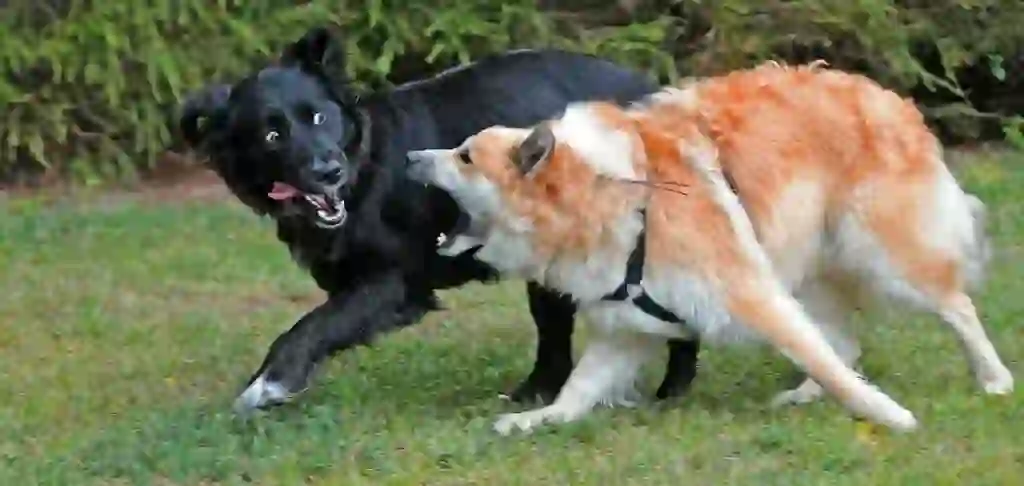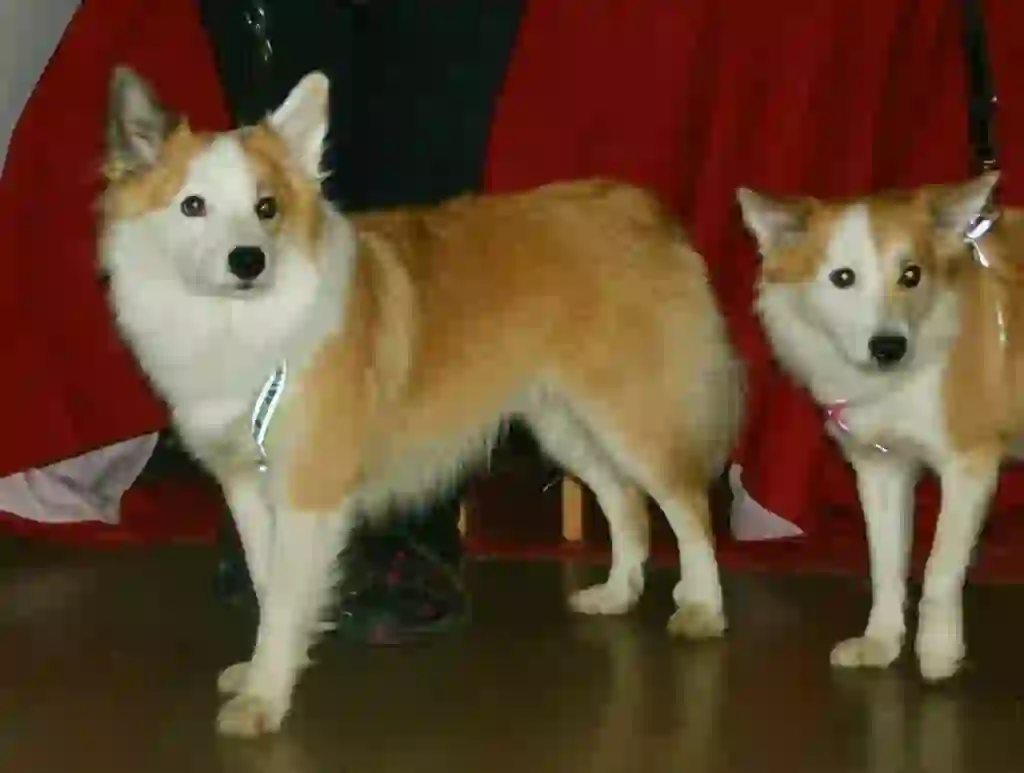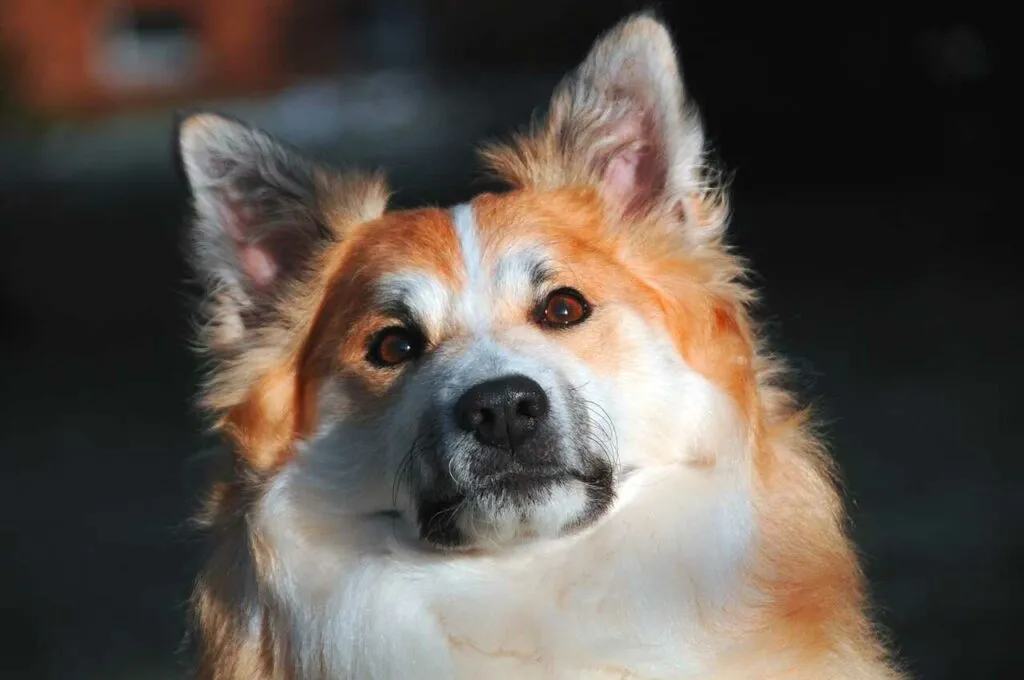
Iceland Sheepdog
Iceland Sheepdog
Iceland Sheepdog
Are you familiar with the Iceland Sheepdog? It is possible that you have never heard of it. In Japan, breeders are not common, so sightings are rare. However, its appearance is somewhat familiar, resembling Japanese dogs. Let's take a closer look at the Iceland Sheepdog.
Iceland Sheepdog Basic Infomation

Country of origin: Iceland
Also known as: Iceland Dog, Free Dog
Medium-sized dog
Height: Males: 33–41cm, Females: 30–38cm
Weight: Males: 11–14kg, Females: 9–11kg
The Iceland Sheepdog, resembling Japanese dogs, has historically served as a herding dog and hunting dog. It has a double coat consisting of an outer coat and undercoat, which provides high insulation, making it resilient to cold. There are long-coat and medium-coat varieties, both having double coats with excellent water resistance. Especially around the neck, the fur is much thicker compared to other areas, making them appear plump, although they have a muscular build and are agile.
It has a long muzzle with a black or dark brown nose, and almond-shaped eyes. Its triangular ears stand upright and move frequently, possibly to capture surrounding sounds.
Its claws are robust, designed to prevent slipping on ice and snow, which is a distinctive feature.
In 874, dogs of the breed known as 'Norwegian Buhunds' were brought to Iceland along with settlers from Norway. These dogs were refined into what is now known as the Iceland Sheepdog.
The Iceland Sheepdog has a history of herding sheep and ponies and hunting. It has a robust body capable of activity even in the coldest winters, and its size, appearance, and abilities have not changed for nearly a thousand years. It is likely that careful management to preserve the breed's qualities has allowed these traits to continue to this day. While organisms adapt to their environment, the fact that this breed has remained unchanged suggests that it was perfected long ago.
By the 15th century, the breed was being exported to England, and was even mentioned in Shakespeare's plays under the name 'Iceland Dog', indicating its popularity in England at the time.
Iceland Sheepdog Q&A

History of the Iceland Sheepdog
In 874, people from Norway brought a breed known as the 'Norwegian Buhund' to Iceland. This breed was refined into what is now known as the Iceland Sheepdog.
The Iceland Sheepdog has historically worked as a herding dog, guiding sheep and ponies, and as a hunting dog. It has a robust body capable of operating even in extremely cold winters, and its size, appearance, and abilities have reportedly remained unchanged for nearly a thousand years. It is likely that careful management to maintain the breed's qualities has allowed these traits to continue to this day. While organisms do adapt to their environment, the fact that this breed has remained unchanged suggests it was perfected long ago.
By the 15th century, the breed was also being exported to England, where it became popular enough to be mentioned in Shakespeare's plays as 'Iceland Dog'.

What is the origin of the Iceland Sheepdog's name?
The exact origin of the name is not detailed, but it likely comes from being a breed from Iceland that herded sheep.
It is also known as the Iceland Dog, indicating its popularity and significance in Iceland.

Was the Iceland Sheepdog ever close to extinction?
Today, the Iceland Sheepdog is well-known and loved not only in its native Nordic regions but also across Europe and the Americas. However, there was a time when it was on the brink of extinction.
At one point, the breed was so popular as a working dog in Iceland that it could only be obtained in exchange for horses or sheep due to its rarity.
During this period, a disease known as 'distemper' spread in Iceland. Distemper is an airborne virus that can lead to death within two weeks to several months after infection. This outbreak drastically reduced the population of Iceland Sheepdogs.
Investigations into the cause revealed that imported animals had introduced the distemper virus into Iceland, leading to a ban on animal imports in 1901.
However, this ban led to further complications. Before the distemper outbreak, Iceland Sheepdogs had been exported to Norway, Sweden, and Finland. These exported dogs were not affected by the virus, so there was a plan to re-import healthy breeding dogs back to Iceland.
The import ban made this plan impossible. In an effort to revive the breed, Icelandic people temporarily used a native sled dog breed, the 'Yakki Dog', to increase numbers. Once the population was sufficient, breeders worked to remove Yakki Dog traits and eventually restored the pure Iceland Sheepdog breed.
Another key figure in saving the breed was a British gentleman and Iceland enthusiast named 'Mark Watson'.
While traveling in isolated areas of Iceland, Mark Watson stumbled upon a surviving group of Iceland Sheepdogs. With the help of veterinarians, he temporarily exported several dogs to the USA for breeding. This effort successfully increased their numbers, helping to avert extinction. In honor of his contributions, his birthday, July 18, has been declared 'Iceland Sheepdog Day'.
As numbers grew, the breed not only thrived as herding dogs but also as watchdogs and family pets. In Iceland, the breed has even been featured on tickets and is considered one of several cultural heritages, highlighting how beloved it is in the country.

What is the temperament of the Iceland Sheepdog?
The Iceland Sheepdog is very cheerful, friendly, and loves to play. It gets along well with other dogs, animals, and humans, making it suitable for families with small children or other pets.
It is affectionate and intelligent but very curious, which means it can sometimes get into trouble by meddling with dangerous things or behaving mischievously. Owners should be cautious of this.
On the other hand, it can be wary of strangers and may bark intensely, but this behavior is meant to protect its family. For example, it will quickly warm up to friends of the owner whom it sees as friendly.
Its ability to get along with various animals is a benefit for owners with multiple pets.

How do you care for an Iceland Sheepdog?
The Iceland Sheepdog is relatively easy to care for and can be kept indoors or outdoors.
The breed is robust with few common illnesses, but it is very sensitive to heat. Even if it is usually kept outdoors, during hot weather, it should be cared for in air-conditioned indoors.
This breed requires a lot of exercise. Besides playing, it needs proper walks, estimated at about two hours per day. It may be better suited for people who can spend a lot of time with their dog rather than those who are busy with work or living in urban environments.
While it has a great appetite and loves fish, it is not a large breed, so overfeeding can cause health issues. Although it might beg cutely for food, it's important to manage its diet.

How do you train an Iceland Sheepdog?
The Iceland Sheepdog is very obedient to its owner and family, making it relatively easy to train.
Like other dogs, if kept indoors, it needs to be potty-trained and taught to use a doghouse.
Its curiosity can lead to jumping on people or developing a biting habit during walks, so it is important to train it from a young age.
Being a herding dog with a strong instinct to guard, it can bark intensely or howl, so it's important to manage such behavior from an early age.
Training should be done patiently and with positive reinforcement.

How do you groom an Iceland Sheepdog?
Grooming this breed can be somewhat challenging due to its thick fur.
Daily brushing helps stimulate the skin and prevent skin diseases. The dense fur can trap moisture, so it's important to keep it dry, especially in humid conditions or on rainy days.
During the spring and autumn shedding seasons, more frequent brushing is beneficial.
Bathing depends on the coat type; long-coated varieties may need bi-weekly baths, while medium-coated ones might only need a weekly bath.
Trimming or cutting the hair to reduce heat stress is an option, so grooming sessions might be necessary depending on the climate.
While the breed's robust claws are useful in snowy conditions, they are less so in non-snowy areas. Therefore, they should be kept trimmed, and if you're not experienced, it's safer to have them trimmed at a vet or grooming salon.
Regular brushing also provides an opportunity for physical contact and helps keep the skin clean.

What health issues should you watch for in an Iceland Sheepdog?
While the breed is not prone to many genetic diseases, 'skin diseases' can be a concern. To prevent these, regular brushing and using canine shampoo to keep the skin clean are important.
After shampooing, it's crucial to thoroughly dry the dog. Dampness can also lead to skin diseases. Although double-coated dogs are slow to dry, it's important to towel dry thoroughly and then use a dryer.

What are the coat colors of the Iceland Sheepdog?
The breed's coat colors include black, grey, fawn-grey, brown, chocolate, and tan, with some dogs having white patches on their face, neck, paws, and tail area.

How can you meet an Iceland Sheepdog?
The Iceland Sheepdog is beloved in Iceland and the UK, and you might be considering adding one to your family.
Unfortunately, there are no breeders in Japan. Therefore, finding a breeder, especially in Europe, is your best bet. It may be a challenging journey, but if you're determined to meet one, consider seeking help from someone who can interpret for you.

What is the lifespan of an Iceland Sheepdog?
The lifespan of the Iceland Sheepdog is generally 12-15 years, similar to other medium-sized breeds. Some have lived up to 20 years. It is hoped that with loving care, many can live out their natural lives.

Would you like to become a part of the 'Animalbook.jp'?
Turn your knowledge into Q&A and share it with the world. ※Publication will be activated after purchase. Let's share information together!
Iceland Sheepdog Type of List

- Iceland Sheepdog
Information
Congratulations! You are the first commenter!

Create Your Favorite List!
Iceland Sheepdog
Save the animals you love! Build your own list to quickly revisit your favorites later.

Would you like to leave a comment?
※Please note: This is for the purchase of rights to post comments within the article.
Find Your Favorites!
Our shop offers a unique and attractive selection of goods themed around various animals.
Iceland Sheepdog References

- KOjIMA https://pets-kojima.com/library/zukan_dog/detail/id=24002
- mofmo-モフモ- https://mofmo.jp/article/6121
- Wikipedia https://ja.wikipedia.org/wiki/アイスランド・シープドッグ
- 子犬のへや https://www.koinuno-heya.com/syurui/agyou/icelandic-sheepdog.html
- ICELAND MARKET https://iceland-market.com/magazine/travel/アイスランド・シープドッグ/
- 価格.com https://hoken.kakaku.com/pet/dog_injuries/infection/distemper/
- みんなのどうぶつ病気大百科 https://www.anicom-sompo.co.jp/doubutsu_pedia/node/1295
Iceland Sheepdog Introduction of media used

出典:https://pixabay.com/images/id-1977418/

出典:https://pixabay.com/images/id-1955804/

出典:https://pixabay.com/images/id-1072993/

出典:https://pixabay.com/images/id-1977383/

出典:https://commons.wikimedia.org/wiki/File:GRATIS_GRETTIR.jpg

出典:https://unsplash.com/photos/H6gCJGUI_NM

出典:https://commons.wikimedia.org/wiki/File:Skinna_Snow_Time.jpg

Help Enrich Our Animalbook.jp with Your Media!
We are constantly looking to expand and enrich our Animalbook.jp with amazing photos and videos of animals. If you have any media that you'd like to share, please contribute and help us showcase the beauty and diversity of the animal kingdom. Your submissions will be credited and featured in our encyclopedia, reaching a wide audience of animal lovers.


















